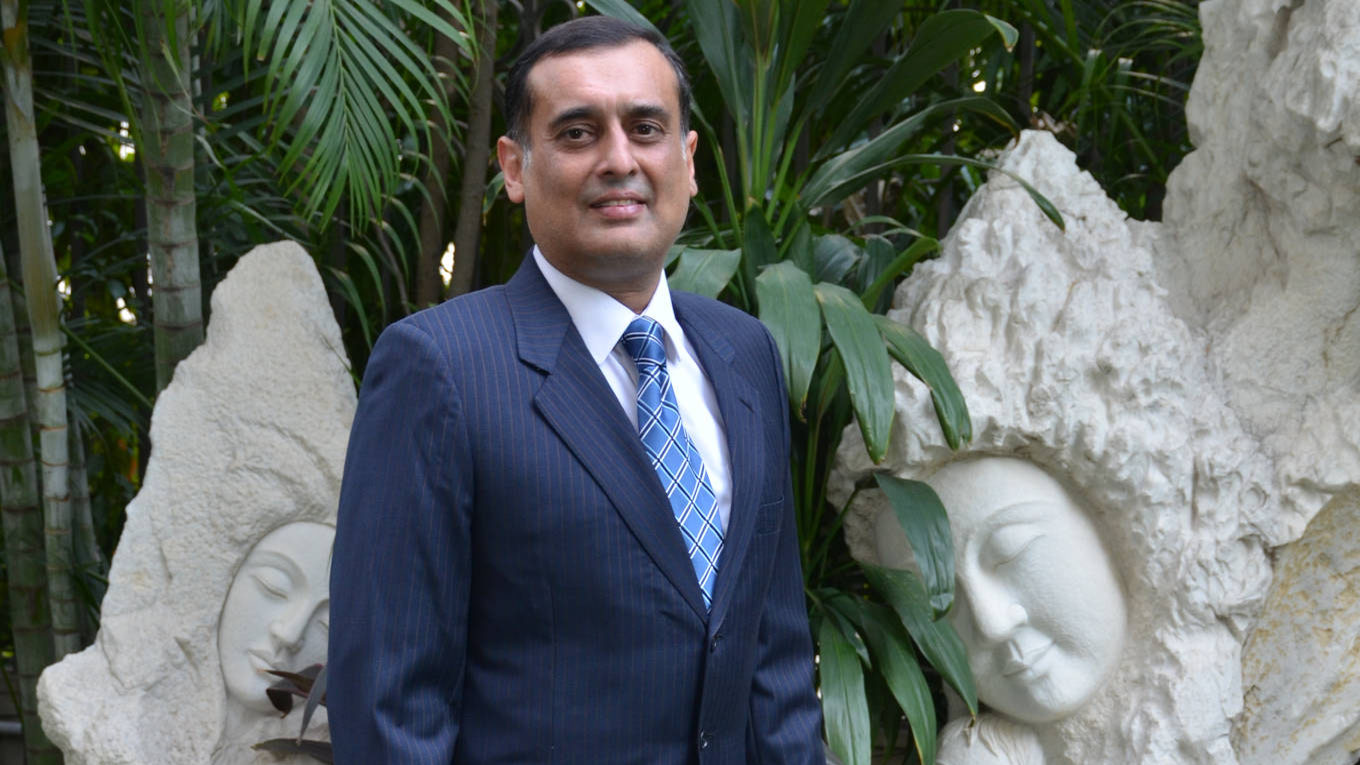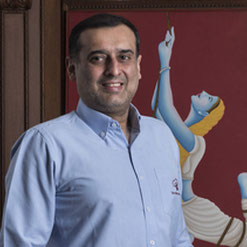-

Malhotra: This is the new Dabur, the Dabur 2.0
New hallmarks
“This is the new Dabur, the Dabur 2.0 if I may call it so,” affirms Mohit Malhotra, CEO, Dabur India. “And we have become more aggressive and fearless now,” adds Burman, while responding to the pertinent point which everybody would like to ask: how is the Dabur of today different from what it was in terms of approach and strategy?
Talk to the market-men who have watched the company for decades and in all probability, they will vouch for the fact that a quality like aggression was not considered to be a part of Dabur’s DNA. “You can call them oldest ayurvedic player on the block, which rather believed in moving at its own slow but steady pace,” says the CEO of a middle-scale FMCG firm. “Even at the best of times in the last decade, the volume of new SKUs launched by them in a good year was 15-20, which was quite low. Not surprisingly, Patanjali had overshadowed them in the ayurvedic product space with its marked aggression around the middle of the last decade,” he adds. “But they have bounced back and have made smart moves in the recent past by getting into new product categories and quickly churning out more SKUs.”
Concurs Abneesh Roy, executive vice-president, institutional equities, Edelweiss Securities. “Under Malhotra, a lot of action is visible in terms of new products launched, alignment with e-commerce, expansion of their reach, etc. It’s quite an exciting period especially for their domestic business.” In terms of its approach, the company’s top management seems to have given up its margin fixation of the past and is toying with more growth options, Roy adds.
Malhotra, a campus recruit for the company over 26 years ago and, therefore, a quintessential Dabur man, has been spearheading operations since 2019 and, under his stewardship, the company has delivered robust quarterly numbers even during the Corona phase, which has stumped many. A typical ‘rising from the ranks’ story, Malhotra brings to the table a successful overseas stint of nearly 15 years, which resulted in Dabur’s international division really taking off and turn into a Rs2,500 crore business at the time he was called back to share bigger responsibilities back home.
“I had joined as a management trainee in 1994,” recalls Malhotra, explaining his journey in Dabur. “And, later, I was closely involved in the launch and development of brands like Vatika (1996), Dabur Red (2001) honey and skin care brand Gulabari, before taking over as head, marketing, and a part of the core team, to develop the international business in 2004. That was quite an experience and, by the time I had left, our international geographical reach had grown to around 100 countries.”
Basic strength
Market-men vouch for the fact that the past two decades have been quite eventful for Dabur on the growth front, though it has not leapt ahead due to the presence of larger players. The company is widely believed to have been moving along, mainly through its expertise in the growing ayurvedic segment, which was considered to be niche in the first decade. But, in the 2010s, with the big-bang arrival of Patanjali on the scene, things began changing for Dabur, as the demand for ayurvedic products began touching the roof.
Initially, Dabur, like many other players, was jolted by the Patanjali wave, as the latter made a dent in the market share of Dabur’s major offerings – honey and Chyawanprash. “Patanjali, at one point, had taken a 20 per cent market share in honey and 6 per cent market share in Chyawanprash, but we have regained our lost turf over the years,” says Malhotra. “I have great regard for Baba Ramdev though, for mainstreaming this segment, which is slated to grow big time in the coming years, as consumers have become more inclined to health products after Corona,” he adds.
In terms of sales, Dabur has by and large given a remarkable performance in its own right during 2010-20, though it may not have been as dazzling as that of Patanjali, which went on to get close to the Rs10,000 crore mark during its decade-long journey. Dabur, on the other hand, has grown at its own pace and has notched some critical brownie points, which includes doubling its sales figure. In 2010-11, its revenue had stood closed to Rs4,100 crore, and this has now shot up to Rs8,700 crore at the close of the last fiscal.
Nobody would have forgotten that, till three years ago, a bullish Baba Ramdev was talking big and spelling out grand targets of becoming India’s biggest FMCG firm in the not so distant future. And the doubling of his revenue trajectory since the beginning of the last decade had stumped many with doubts being strongly expressed that maintaining 100 per cent growth annually in revenue for so long would be easier said than done (see Cover Feature, Business India: Patanjali’s 2x challenge, dated 28 August 2017).
Unfortunately for Patanjali, those apprehensions have come true and there has been a visible slowdown in the company’s expansion in the last couple of years (in 2019-20, its reported operating revenue was Rs9,023 crore, with a small single-digit growth over the previous year figure). And there are different theories floating in the market as to why Patanjali has lost steam, after moving at a brisk pace for nearly a decade. “The company developed serious supply chain issues, where its distribution network did not match up to its growing demand,” says a senior executive of a leading wholesale retail firm which supplies the products of all prominent FMCG firms. “Its production-centricity to one key location in Haridwar has also probably created serious troubles for the company. In our sales channel, Patanjali is still a major Ayurvedic brand, but Dabur has taken the lead in terms of volume sales.”
Patanjali’s current low growth phase has turned out to be a blessing in disguise for Dabur, which certainly has a better reputation in terms of professional management. “Patanjali had a great start but they soon vacated the space,” says Ankur Bisen, Senior VP, Technopak Advisors. “There was no point in giving up its stronghold offerings, to try and expand its portfolio by including products like jeans and noodles. Dabur, on the other hand, is a professional company and it made no such attempt.”
Professional management is indeed cited as a major plus for Dabur, with the promoter family deciding to hand over the reins to managers from outside the fold way back in 1998. The family had briefly come back to take over the operational baton in 2002, after the first CEO had quit over some differences, but since the appointment of Duggal as CEO in 2002, it has largely stayed away from day-to-day control. While the functional head or chairman is selected from within the family by rotation, the company is governed by a professional board.
“The Burman family was among the first to realise that the promoters should provide a long-term vision to the company, while professionals should manage the show efficiently,” says PD Narang, group director and an old hand with the firm (he had joined as management consultant in the early 1980s). “So, the family decided to hand over the management control to professionals, even as it took non-executive roles on the board. However, it is available to give broad strategic directions or for any help required, but otherwise stays away from day-to-day management.”
-

Narang: a structured plan is in place
According to Narang, a structured plan was put in place that chalked out the course where only some members representing the family would occupy board positions. Today, the family has just four representatives on the 13-member board. None of the Burman family members hold executive positions or draw salaries from Dabur. They have all set up their own independent business ventures and manage those businesses outside Dabur. Their business interests today cover areas like financial services, healthcare, F&B retail and sports, to name a few.
Market positioning
Market-men endorse the theory that professional management has gradually transformed the company without altering its basic DNA. Developing a sizeable international turf has been a major additional asset in recent decades and, in the domestic as well as overseas markets, the company has quite an enviable positioning across several product categories.
Dabur has a manufacturing presence in nine countries (nearly 20 plants including a dozen in India) and sells products in over 100 countries. It has a broad portfolio of over 250 herbal or ayurvedic products with close to 1,000 SKUs. It further boasts of an expansive distribution network across the country, selling its products across consumer product categories, such as health care, oral care, hair care, home care, skin care and foods.
The company’s operations are largely driven by a power brand strategy, ensuring more emphasis in the sales of nine brands – Chyawanprash, Honey, Lal Tail, Honitus, Pudin Hara, Red Paste, Amla Hair Oil, Vatika and Réal fruit juice – which cumulatively account for over 70 per cent of its total sales.
On the domestic side, its main constituency, Dabur has a clear leadership positioning in segments like packaged fruit juices, Chyawanprash, honey, facial bleach, air-fresheners and mosquito-repellent creams (see graph: Market share) as per a recent report by a market research firm. It occupies the number two slot in hair oils, glucose, baby massage oils and toilet cleaners and, with a clutch of toothpastes (mostly ayurvedic like Red, Meswak, Dant Rakashak and Babool), the company is positioned after Colgate and Hindustan Unilever (but before Patanjali) in the relatively large sized toothpaste market. “In 2019, the Indian toothpaste market stood at about Rs10,000 crore, exhibiting a year-on-year growth of 4.3 per cent. India is witnessing a growing adoption of natural and ayurvedic toothpastes among consumers.
The players in the market are facing a huge growth in the toothpaste segment. For instance, Dabur witnessed double-digit growth in its flagship brand Dabur Red Paste,” says a recent report on the Indian ayurvedic products business by market research firm TechSci. Honey is another major winner for Dabur, where it has taken a huge lead. “The total domestic honey market is close to Rs3,000 crore, which also includes nearly 40 per cent share of the unorganised segment. Dabur has 47 per cent market share among the organised players, Patanjali has 23 per cent, while we are ranked at the number three slot with 13 per cent market share,” says Pankaj Mishra, CEO, APIS India, which has emerged as a leading honey player in recent years.
Chyawanprash’s positioning in Dabur’s portfolio as a traditional asset has also been further consolidated during the Covid period. “Companies like Dabur India and Himalaya have witnessed a huge surge in demand for Chyawanprash in 2020-21. For instance, the TechSci report, says Dabur India saw a 52.6 per cent growth in its healthcare supplements business, led by its Chyawanprash brand in 2020. And, in the fast-growing Rs3,000 crore fruit juice market, Dabur’s Réal Juices brand (the fastest to reach the Rs1,000 crore sales bracket) has emerged as another leading driver. The TechSci report pegs Dabur as a key player in the segment along with PepsiCo, ITC and Hector Beverages.
-
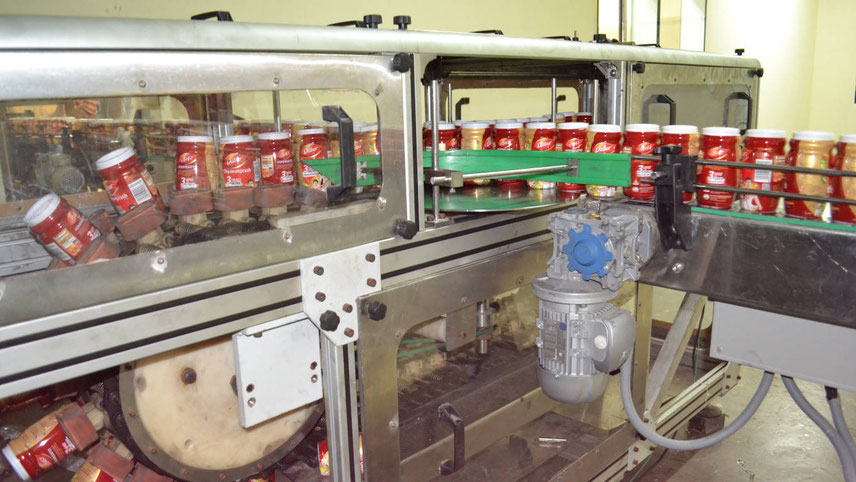
Dabur has a manufacturing presence in nine countries
The contribution from its international business is close to 28.2 per cent of total revenues, with its top five markets being Egypt, Saudi Arabia, the US, Turkey and Nepal. In 2002, the company’s overseas business (mainly through exports) was just Rs106 crore – 8 per cent of its turnover, which then stood close to Rs1,200 crore.
Building the international business had its own set of challenges, feels Malhotra, but the company was committed to have a well-developed overseas vertical, which could carry quintessential Indian ayurvedic offerings to the world. And on international turf, it has also grown in size through a couple of acquisitions – the Namaste group in the US and Hobi Kozmetik group, a cosmetic firm in Turkey. “These acquisitions have eventually worked well for us,” says Malhotra.
When it comes to the overall positioning of the company vis-à-vis its esteemed peers in the FMCG space on different critical metrics like sales or even market capitalisation, most of the rankings in recent years have broadly put Dabur in the top six FMCG players’ list, as part of an august gathering, together with HUL, ITC, Britannia, Nestle, etc.
Dabur’s promoters hold close to 68 per cent of the company’s stake, with institutional investors holding 24.98 per cent. A note issued by a major investment advisory firm around the end of January pegs the company’s market cap at Rs91,066 crore, which is better than that of Britannia. Market leader HUL, though, has a market cap of over five times that of Dabur. Its sales, at close to Rs9,000 crore, are also one-fifth of HUL, which had reported over Rs43,000 crore of revenue last fiscal. The investment advisory firm, however, has recommended a strong ‘hold’ call on its share, citing high management efficiency with an RoE (return on equity) at 25.54 per cent, high dividend pay-out ratio, low debt to equity ratio at 0.2 times and high institutional holding of about 25 per cent, as the major pluses of the company.
While the returns on its stock in the last one year have been 7.76 per cent, as against the BSE-500 average of 13.11 per cent, there has been an increase of 0.45 per cent in the exposure of FIIs in the company in the last one year. However, low single-digit sales and operating profit growth registered in the last five years have been its key weaknesses.
Opportunities post Corona
If the market was waiting for the large-cap Dabur, with its distinctive Ayurveda DNA, to show robust double-digit growth numbers, the moment may well have arrived. And much of this stems from the fact that Dabur chose to get into an aggressive mode and surprised the market with new product launches and the expansion of its SKU portfolio, when the corona crisis had brought all activities to a screeching halt early last year. The company, which had closed its offices on 15 March, much before the government orders for the lockdown came, later took the hard call of asking its scientists and researchers to come to the R&D hub (barely one km away from its headquarters in Ghaziabad), and work on new health offerings (researchers were provided with special insurance coverage). “This could well have been the most active period in the history of the company,” says Malhotra.
And, going by his version, the company has launched about 40 products since the lockdown last March. These include variants like milk, sugarcane, aloe vera, juices, pickles, chutney, upgraded amla hair oil in the form of amla aloe vera and amla badam, antiseptic shampoo, dant rakshak brand in oral care and tulsi healthcare drops, besides the dedicated immunity kit for consumers. “We have turned this crisis into an opportunity,” affirms Malhotra. “And, today, we find ourselves at a new inflection point of transformation on all vectors. Culture transformation is underway – we have become more entrepreneurial, more fearless, nimble and agile, etc. We have become more innovative in our ‘go to market’ approach, plant operations, supply chain, cost management, etc.”
-
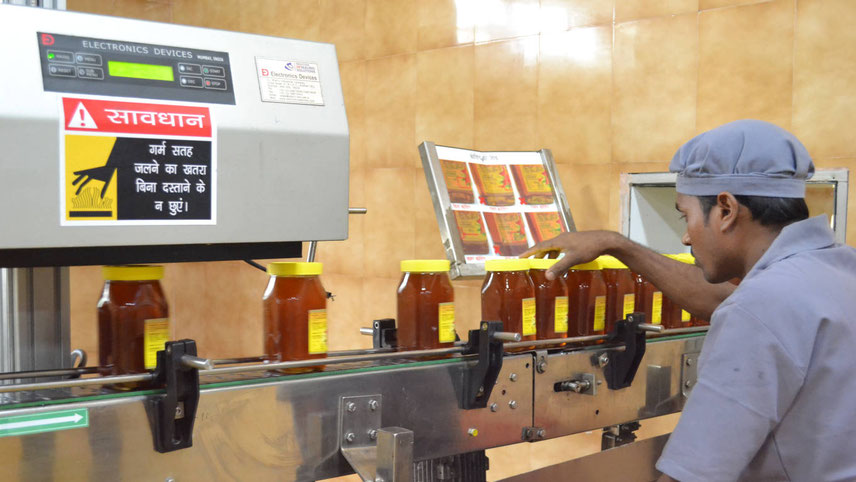
The company has launched about 40 products since the lockdown last March
Its R&D hub, which employs over 120 scientists, is directly linked to the dedicated research units at all its plants within the country and outside and this seems to be a huge asset for the company. As a senior official associated with its R&D hub says, scientists attached to the unit are constantly working on some 250 herbs, which include about 15 endangered species.
And, therefore, it is ready with the ingredients of new product lines (as well as the upgradation of existing products), which can be quickly pressed into commercial production with the necessary approvals when needed. And this is what played out last year when the top management decided to churn out new offerings post Corona at a frantic pace. “There is no doubt that Dabur has serious R&D capabilities; and cutting, pasting and contract manufacturing are not the routes they prefer,” observes Karan Chechi, director, TechSci Research. The additional strength comes from its supply chain arrangement, especially in terms of procurement of herbs and natural inputs.
“We have identified environmentally sensitive species of medicinal plants and herbs, and developed methodologies to address their sustainability concerns. We have joined hands with local NGOs across the country and universities in this mission, jointly undertaking special training programmes for farmers, villagers and tribal communities across the country to train them on sustainable and environment-friendly cultivation processes,” says Malhotra, while adding that over 7,000 farmers are part of Dabur’s eco-system. For maintaining high-end precision for its input procurements, the company runs over 10 satellite nurseries across the country – from the Himalayan valleys to the coastal region in Tamil Nadu.
Dabur is now also keen to have a larger alignment with e-commerce sales channels and the Corona phase has clearly expedited this process. According to Adarsh Sharma, executive director (sales), the e-commerce business of the company has more than doubled and today it has a saliency of about 6 per cent, as compared to three per cent a year earlier. “In the past few months, we have launched several new Dabur brand products, especially for e-commerce on the online retail space. These include apple cider vinegar, a ‘baby range’ with eight products, 100 per cent cow ghee, organic honey and himalayan forest honey, to name a few. Many more such online exclusive innovations are in the pipeline,” says Sharma.
Additionally, the company is now also enlarging its digital presence – both in terms of further consolidating its engagement with business partners and also reaching out to the larger consumer class. “With physical order-booking becoming difficult during the lockdown period, we leveraged technology to make the process simpler and seamless for our partners. We rolled out a mobile app for retailers, commenced order-booking on WhatsApp and activated our call centre to take orders from retail outlets across the country. There has also been a steep jump in advertising through digital media and even activities like market research are now online and digital,” Malhotra says.
-
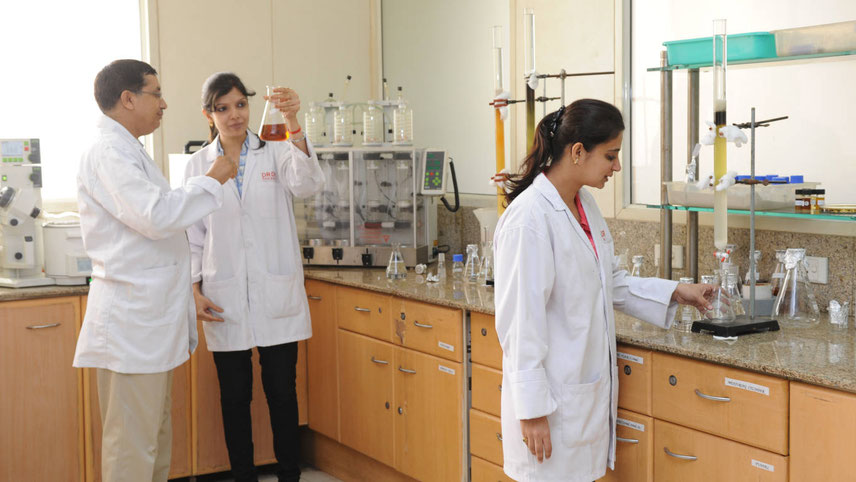
Armed with 120 scientists Dabur's R&D unit is constantly working on some 250 herbs
Dabur’s decade?
The good news for Dabur is that the aggression shown in the recent past has also translated into quick results, as reflected by its Q2 and Q3 numbers in the Corona affected fiscal. The recently released third quarter results have marked the company’s best three-month performance in its history, with consolidated revenues for the quarter marking a 16 per cent jump to Rs2,729 crore – up from Rs2,353 crore a year earlier. The consolidated net profit for the third quarter also surged 23.7 per cent to Rs492 crore, as against Rs398 crore a year ago.
And its FMCG business volume growth stood at a hefty 18 per cent during the quarter. “Riding on our strategic business transformation exercise, aimed at developing aggressive growth engines in the core business areas, our domestic healthcare vertical has ended the quarter with a 28 per cent growth,” maintains Malhotra. “We are also witnessing a revival in discretionary spending by consumers, which has helped the home & personal care business grow by 16 per cent. Our international business has also staged a smart recovery and reported a growth of 13.5 per cent during the quarter.” A hefty double-digit growth has been witnessed across several key segments, such as healthcare products (28 per cent), oral care (28 per cent) and hair oils (about 12 per cent). Its foods business also reported 5 per cent growth during the quarter.
“Excluding the institutional and HORECA business, which continues to be under pressure, Dabur's foods business has ended the quarter with a 16 per cent growth,” explains the company management in its release. The company had reported impressive numbers in the second quarter as well, recording a 13.7 per cent growth in consolidated revenue to Rs2,516 crore – up from Rs2,212 crore a year earlier. The consolidated net profit had surged 19.5 per cent to Rs481.7 crore, as against Rs403 crore a year earlier.
Having put up sterling performances in quick succession during the Corona fiscal, the moot question that faces Dabur is: does it augur well for the company to march ahead with more aggression – especially, at a time when Patanjali, its main competitor in the fast-growing ayurvedic segment, has slowed at present and other FMCG majors’ attempts to offer similar products has not met with great success? “For the next 10 years, we are definitely going to see ayurvedic and health products growing significantly and they may even improve their share in the FMCG basket to 35-40 per cent, from the present level of over 20 per cent. And, given its credentials and present standing in the market, Dabur certainly seems to be ready to reap the maximum benefits,” says Chechi.
Dabur’s possible big-ticket growth theory is also supported by the fact that some of its stronghold products, such as Chyawanprash and honey, which primarily used to be winter or seasonal products, now have a larger acceptability as season-agnostic products. “While the pandemic was peaking last summer, the honey market had grown by over 50 per cent,” affirms Mishra of APIS. “And this will now set the trend for continued double-digit growth for this product, which is mostly consumed by health-conscious consumers, including millennials.” Adds Roy of Edelweiss: “Chyawanprash has a penetration of only six per cent in India. But packaged fruit juices and ayurvedic toothpaste have begun to grow at a commendable pace and Dabur has strong positioning in these product lines as well.”
-
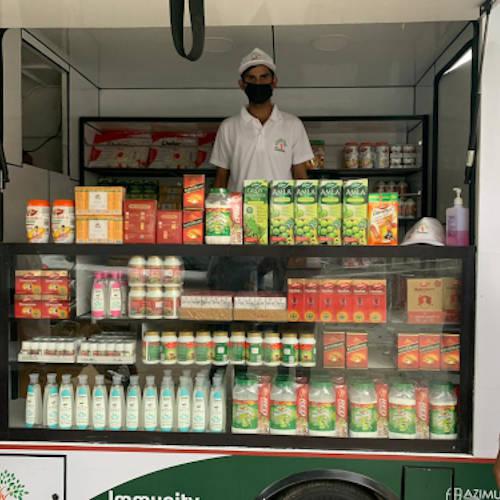
The company bets big on the rural sector
Driven by a conviction that Dabur’s fast-track growth is almost a guaranteed factor, Malhotra elaborates the marketing strategy the company would be broadly pursuing in terms of taking more products to more consumers. “We normally take our products from our healthcare ayurvedic vertical to chemist outlets first and then to grocery,” he explains. “So, while Chyawanprash and Hajmola are available everywhere, the pudin hara tablet is available only with chemists. We have no interest in making everything available at the grocery.”
And there is a serious commercial metric attached to the graduation of a product across the marketing value chain – from the Ayurveda basket, it is taken to the OTC level, when it becomes a Rs5 crore business. And it is later pushed to fast-moving health goods (FMHG) or the grocery stage, when it becomes a Rs40-50 crore sales proposition. “We have a host of products waiting to be pushed to the FMHG stage now,” Malhotra says.
Another critical element of Dabur’s growth plan is its growing penetration in rural India. “Ayurveda resonates more in rural than urban India. There are over 600,000 villages and, by the end of this year, we are targeting 60,000 villages, which contribute 50 per cent of FMCG consumption. We are appointing village level entrepreneurs (VLEs), who will become our stocking points for distribution in the vicinity,” he explains, while adding that the rural sector contributes 45 per cent of the company’s revenue. And Dabur envisages a huge scope in the space. “Because of these factors, we expect our India business to grow. The international share may come down a bit because of strong tailwinds in India, which will grow at a faster pace,” he adds.
While Dabur’s top brass is convinced of big-ticket growth with a surge in Ayurveda and natural products within the FMCG basket, is it correct to believe that the big- and deep-pocketed boys of the game, who may not have Ayurveda in their DNA, will offer no challenge? “Consumers are no fools. They grant you credit on the basis of what you are. Dabur’s foundation is Ayurveda. For MNCs, their DNA is FMCG. You may launch products with tulsi and haldi ingredients, but that is not going to change anything,” Malhotra asserts.
New products
There is, however, clear evidence to suggest that other FMCG majors with expansive generic offering portfolios are also trying hard. HUL’s Ayush line of products, Colgate’s Vedshakti, Marico’s Saffola brand honey (which is reported to have met with good response in the market), etc, are leading examples. HUL acquiring Indulekha, an ayurvedic hair oil brand, midway through the last decade and augmenting its operations significantly since then, is another case in point. Interestingly, taking into account the market size of Ayurveda products in 2019, the TechSci report had mentioned leading firms, such as Dabur, Patanjali, Himalaya, Emami and Shree Baidyanath Ayurveda as having a market share of 45 per cent in a cumulative sense, with the rest belonging to others, including strong regional brands down south.
“South India is the biggest ayurvedic market in the country but it has brands which have existed there for several decades. Companies typically located in the north, with expertise in Ayurveda, have yet not been able to penetrate the southern market to the extent they would have desired,” points out Abhilash Ramesh, executive director, Kairali Ayurvedic Group.
-
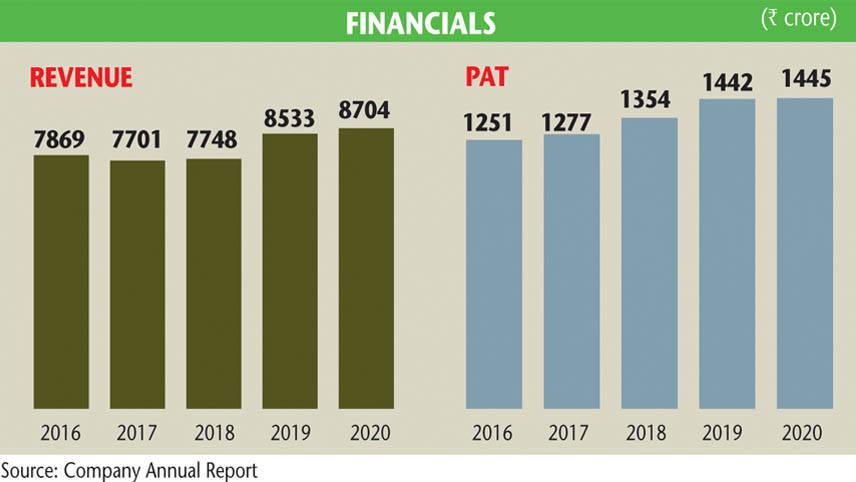
“I think players like Dabur, Patanjali and Himalaya will have the advantage in edible health products,” remarks Bisen of Technopak. “HUL and ITC will not bother to get into kadha, which will be a difficult stretch for them, despite all their might. But in the non-edible space (such as HUL’s herbal shampoo or Colgate’s Vedshakti), they can make a mark.” Interestingly, Dabur has also made moves into the tea (herbal) and cow ghee segments, which has surprised many. Does this mean the company is moving out of its comfort zone and moving into territories dominated by others? Additionally, is this indicative of the company’s larger ambition to get into the business of high-volume selling products like edible oils or packaged atta or rice at some stage?
When asked, Burman evades a direct answer. “The new products have been developed to specifically cater to the emerging consumer needs for immunity building, health and personal and household hygiene. You will see many more such innovations, going forward, but I would not be able to provide any details of our planned new product introductions,” says he. “At a gradual pace, they may be looking at new categories. But, in the medium run, they will continue to focus on their core strengths,” responds Bisen, offering a market perspective.
Considering the recent churnings and projected equations, the moot question now is: in terms of the next milestone, what are the numbers the company is eyeing in the coming years? Dabur’s top brass declines to comment on this, but a recent report by the brokerage firm Motilal Oswal provides some broader indications which projects the company crossing the Rs10,000 crore sales figure in 2021-22 and further reaching close to Rs12,000 crore the following year, with double-digit growth in the 11-14 per cent range. For the company, which has a great legacy, the time has come to match expectations and venture into new growth orbits.
